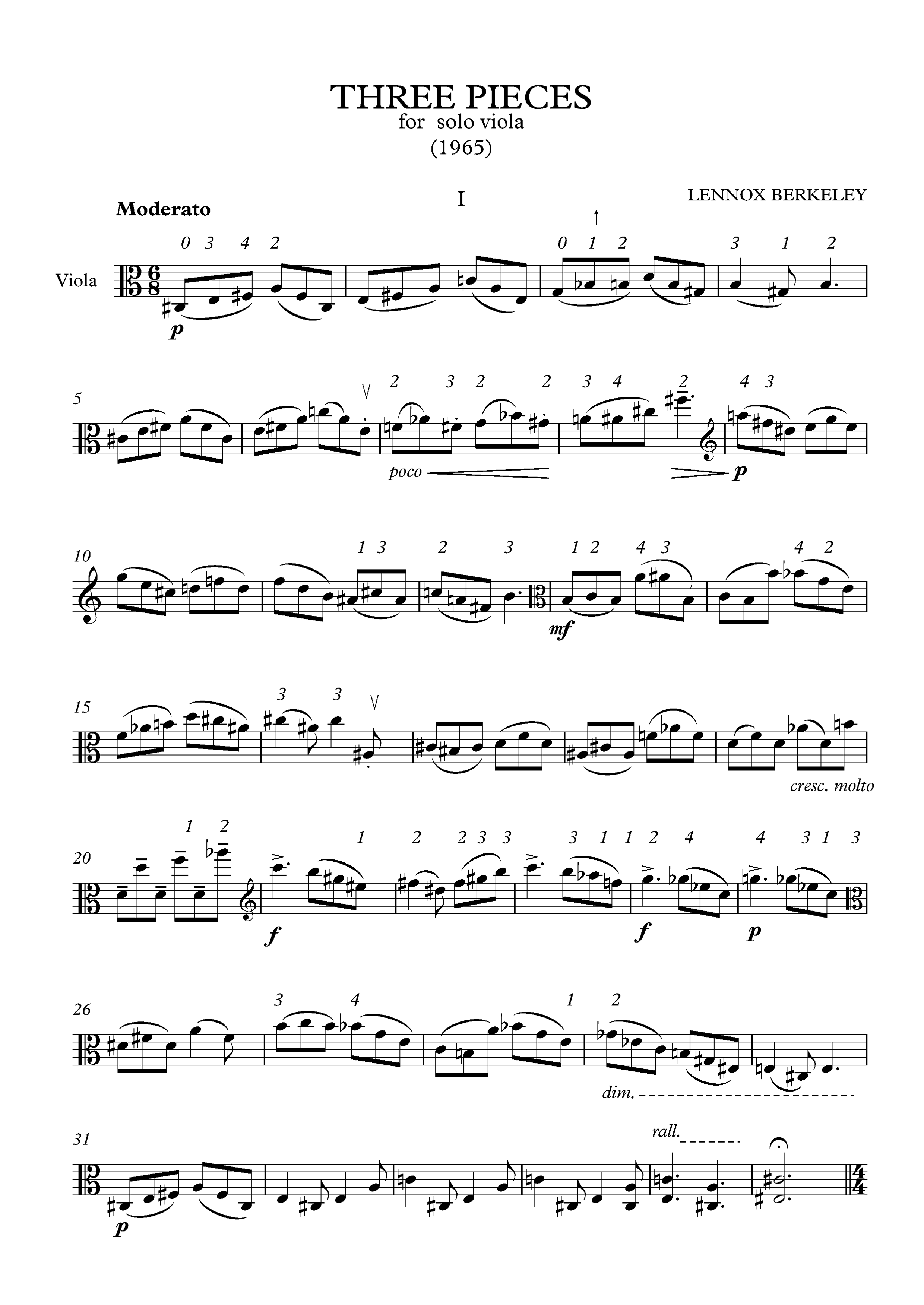Berkeley’s viola music
Jan van der Starre on Berkeley’s viola music

I am a Dutch amateur violist and violinist, a very common combination. Some 30 years ago I played the viola in a string trio, the kind of playing which consists of coffee with a chat, some playing and, to finish, wine with more small talk. But the playing itself was nonetheless taken seriously. I have always been on the lookout for music which I consider to be off-mainstream, not the regular Mozart, Beethoven and Brahms, both for my record collection as well as for music to play myself. One day I was browsing through a stack of scores in the local music shop and came across the String Trio by Lennox Berkeley. I must confess that at that time his name was new to me, but the music looked playable and interesting, so I bought it. We studied it and played it for some time, with pleasure. After a few years our trio was disbanded, but I kept the music.
Recently I was asked to play the first violin in a newly-formed amateur string quartet, more or less on the same basis as the trio - that’s to say, coffee, small talk etc. When the second violin went on holiday we decided to fall back on string trio literature, and Berkeley’s was a serious candidate. As preparation I bought the CD by the Berkeley Ensemble which contains a very nice performance of the String Trio, but also Three Pieces for Solo Viola. On hearing these I was immediately taken by them. I find that music always should tell some story or evoke images, which need not be self-evident but may contain more or less vague hints as to their content.

These three pieces, for all their shortness, are rich in images and moods. For example, the first one is a joyful conversation about planning an outing or a short holiday, in any case, something pleasant to look forward to, whereas the second represents an exchange of wistful memories while enjoying a good glass of red wine. The third could well be thought of as an accompaniment to a documentary about flowers with dancing insects. But, to be honest, tomorrow they could suggest totally different images. In any case, they sounded more or less playable for the level of musician I am, so I decided to purchase the score.
Alas, I could not trace the printed music – nor a digital copy in, for instance, the Petrucci music library (obviously, because it is not rights free).1 Luckily, the CD contained the address of the Berkeley Society so I contacted them. To my great satisfaction I received a prompt reply from Tony Scotland, referring me to the Berkeley music archive at the British Library and suggesting that I might nudge Chester’s to publish the Three Pieces. I did both, but I am sad to say that Chester’s informed me that they would not be pursuing the title for publishing - understandably perhaps, as I could not guarantee more than a single sale in the Netherlands.
The British Library, although very helpful, could not trace the manuscript, which I find strange, to say the least. I did not press them, however, as I had contacted the Berkeley Ensemble in the meantime. Dan Shilladay of the Ensemble was so kind as to send me a scan of his photocopy of the manuscript. On top of that Tony Scotland unearthed a Sibelius transcription made by Jayson Mackie, a composer member of the Society who consented to my receiving a copy.
During the search I learned a lot more about Lennox Berkeley and his music, and it confirmed my opinion that there is a lot more good music out there than you would expect listening to the radio. Above all, I am now well-equipped to start learning the Three Pieces. The first attempts are promising, both as regards my technical capabilities, as well as, and more importantly, the attractiveness of the music. I regularly play together with a pianist and we organise an annual house concert at which we play for friends and family the pieces we have been studying. My intention is to play the Berkeley pieces at our forthcoming concert as I feel that more people should hear them. Thanks to all the friendly people who made this possible.